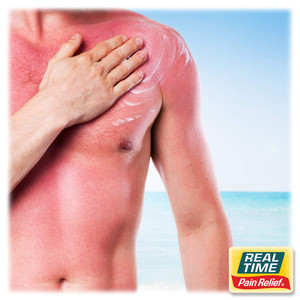Understanding Frostbite
1st Dec 2023
Frostbite is a potentially serious condition that occurs when skin and other tissues freeze due to exposure to extreme cold. It commonly affects extremities such as fingers, toes, nose, and ears. The severity of frostbite varies, ranging from mild cases with superficial skin involvement to severe cases where deeper tissues are affected. While prevention is the key, it's essential to understand the potential consequences and explore ways to alleviate the associated pain and discomfort. In this article, we'll delve into the intricacies of frostbite, discuss its stages, and explore how pain-relieving lotions might offer relief.
Symptoms of frostbite include numbness, tingling, pain, and skin discoloration. In severe cases, blisters and tissue damage may occur. Immediate medical attention is crucial to prevent further complications.
Stages of Frostbite:
Frostnip (First Stage):
- Mild form of frostbite
- Superficial freezing of the outer skin layers
- Symptoms include numbness, tingling, and red or pale skin
- No permanent damage at this stage
Superficial Frostbite (Second Stage):
- Involves the freezing of deeper layers of the skin
- Skin appears pale, hard, and cold to the touch
- Blisters may form after rewarming
- Tissues may recover with proper care, but can lead to long-term sensitivity
Severe or Deep Frostbite (Third Stage):
- Involves freezing of tissues deep beneath the skin
- Skin appears white or bluish-gray, and it feels hard and cold
- Severe pain, numbness, and muscle stiffness
- High risk of permanent tissue damage, including nerve and blood vessel damage
Advanced Frostbite (Fourth Stage):
- The most severe stage of frostbite
- Extensive tissue damage with potential for gangrene
- Skin may appear blackened and hardened
- Requires immediate medical attention, often involving surgical intervention
How Pain-Relieving Lotions Can Help:
Pain-relieving lotions, infused with botanical extracts and essential oils, may provide soothing relief for frostbite-related discomfort. Here's how they work:
Anti-Inflammatory Properties:
- Ingredients like arnica, chamomile, and calendula possess anti-inflammatory properties.
- These may help reduce swelling and inflammation associated with frostbite, providing comfort to affected areas.
Circulation Enhancement:
- Lotions containing ingredients like peppermint, eucalyptus, and ginger can promote blood circulation.
- Improved circulation is vital for the recovery of frostbitten tissues, as it helps deliver essential nutrients and oxygen to the affected areas.
Nerve Calming Effect:
- Lavender, chamomile, and marjoram are known for their calming effects on the nervous system.
- These ingredients may help to alleviate the pain and tingling sensations associated with frostbite, offering a sense of relief.
Moisturization:
- Frostbite often leads to dry and damaged skin.
- Lotions with ingredients like shea butter, aloe vera, and coconut oil provide hydration and promote skin healing, and may help to prevent further discomfort.
Conclusion:
In the battle against frostbite, natural pain-relieving lotions emerge as valuable allies, providing relief through anti-inflammatory, circulation-enhancing, nerve-calming, and moisturizing properties. As with any medical condition, it's crucial to seek professional medical advice for severe cases of frostbite, but incorporating natural remedies can complement the healing process and enhance the overall well-being of individuals affected by this cold-induced ailment.
References/Resources:
- Mayo Clinic. (2023). Frostbite. [Link](https://www.mayoclinic.org/diseases-conditions/frostbite/symptoms-causes/syc-20372656)
- American Academy of Dermatology Association. (2023). Frostbite: Tips for managing. [Link](https://www.aad.org/public/diseases/other-conditions/frostbite-treatment)
- National Institutes of Health - MedlinePlus. (2023). Frostbite. [Link](https://medlineplus.gov/frostbite.html)
- Arthritis Foundation. (2023). The Benefits of Arnica. [Link](https://www.arthritis.org/health-wellness/treatment/complementary-therapies/supplements-and-vitamins/arnica)
- The International Journal of Preventive Medicine. (2013). The effects of lavender aromatherapy on pain following needle insertion into a subcutaneous port: A randomized controlled trial. [Link](https://www.ncbi.nlm.nih.gov/pmc/articles/PMC3796379/)





